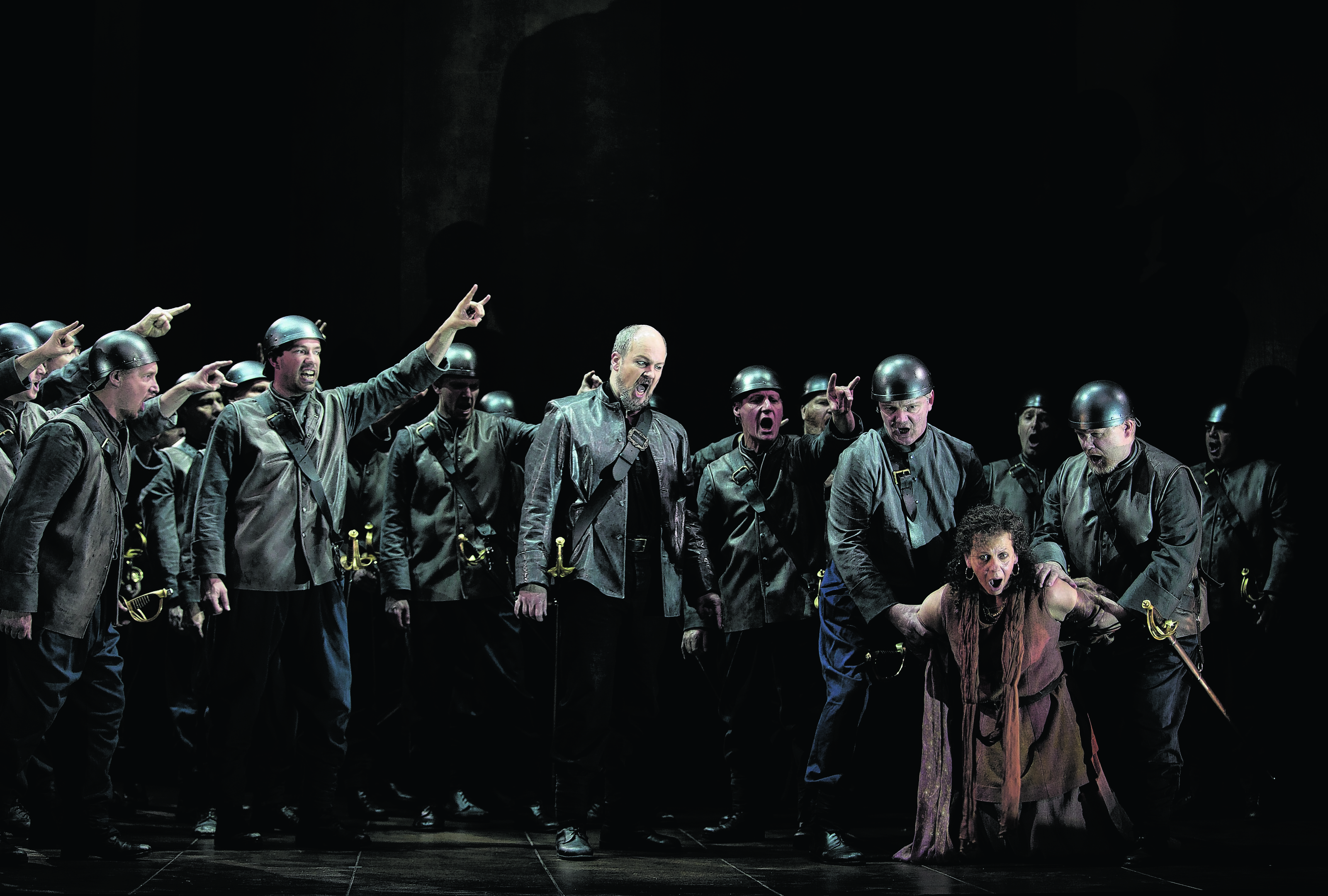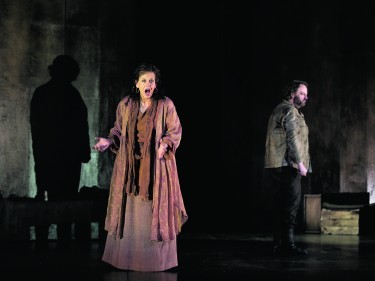Cheryl Livingstone speaks to Anne Mason about why her character in Il trovatore is more than meets the eye
When the infant son of Count di Luna falls ill after a visit from a gypsy woman, she is burned at the stake for witchcraft. Driven by vengeance, her daughter Azucena abducts the child, intending to kill him, but, in her delirium, throws her own son on to the fire.
Years later, she has brought the count’s son up as her own and he and his elder brother, unaware of their relationship, are rivals for the beautiful Leonora.
From reading the plot, it’s easy to think of Azucena as the villain. But Anne Mason, who will be playing that role in Scottish Opera’s performance of Verdi’s full-blooded and monumental Il trovatore, has another view of the woman.
“Funnily enough, someone said to me at the end of the first performance: ‘Oh, she’s such a horrible woman,’ and I said: ‘No, she’s not at all,’” said Anne. “I don’t know where they got that idea from. I think she’s just had a terrible life. Can you imagine watching your mother being burned at the stake? And what effect can that have on a child? And so to see that and then the mother crying for revenge. That’s the thing. She’s not only watching it and got to live with it, but her own mother is saying I want you to avenge me. Get revenge for this.
“So I think she just becomes obsessed with how she can resolve this whole horrible thing. I think she does it spontaneously; I don’t think she planned to steal this child. Whatever drove her to it, I don’t know. And then, of course, when she discovers she’s actually thrown her own child into the fire, it’s really horrible.
“I think she does really just go mad in the end, because of all this. If she was a horrible person, she wouldn’t, would she? And she does everything she can to raise that child as her own. Well if she was horrible, she wouldn’t do that, either, would she? She would just abandon it.
“So I see her as a sad figure; really, really passionate and very deep, but not horrible in any way. She’s done what she’s done out of love for her mother. And yes, there is an element of revenge in her, but you hit out at people when they hurt you; it doesn’t make you a bad person. So that is how I am playing her.”
And Anne should know, this will be the third time she has taken on the role and she says it has been nice coming back and finding out different things about the intriguing character.
She said: “I think, with Azucena, there are so many different things you can find out about her. You can dig and research and find even more facets to her. It’s not just one dimensional, which is something that I really enjoyed.
“I find revisiting the role, even though I am older, I am singing it better. I think I’ve got the measure of it even more now. And so I’m freer to be even more expressive on stage because I am not so concerned with the technical aspects of singing the role.”
Jealousy, revenge, love and hate are some of the themes that collide as the opera, directed by Martin Lloyd-Evans, crashes towards its spectacular conclusion. The stark, brooding lines of the set, combined with the atmospheric lighting, create a majestic and menacing backdrop for the impressive cast and chorus of 50 to tell this dark story. But it is the spectacular score that really bring these themes to life.
Anne added: “Verdi is a very deep and passionate and open composer and I think you need that kind of story to go with the depth of the music. It’s so passionate, so you need a passionate story to complement it. So that kind of story does lend itself to this composer. You couldn’t do that with Mozart, not in such a grand way. This is grand opera, completely different, so you do need a large-scale emotional story to complement.”
Il trovatore is at Eden Court Theatre tonight, Friday, June 5, and tomorrow, Saturday, June 6, at 7.15pm. There is also an “unwrapped performance” on June 5 at 6pm. You can also catch it at HM Theatre in Aberdeen on June 11 and 13, with another unwrapped performance on June 12.

